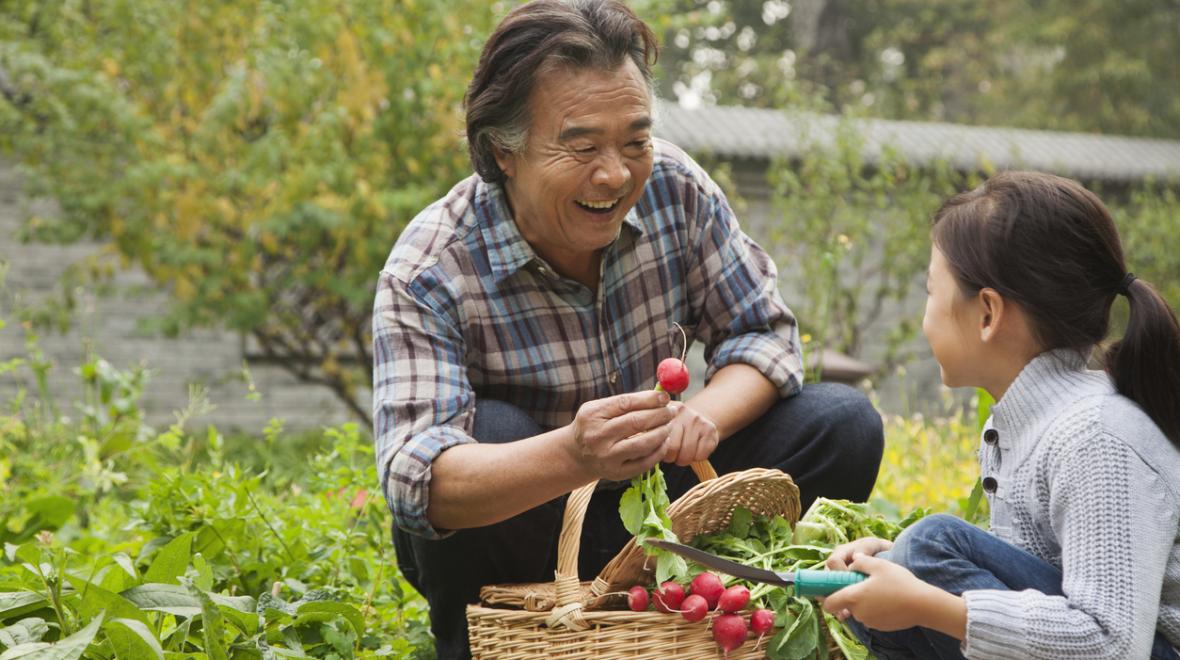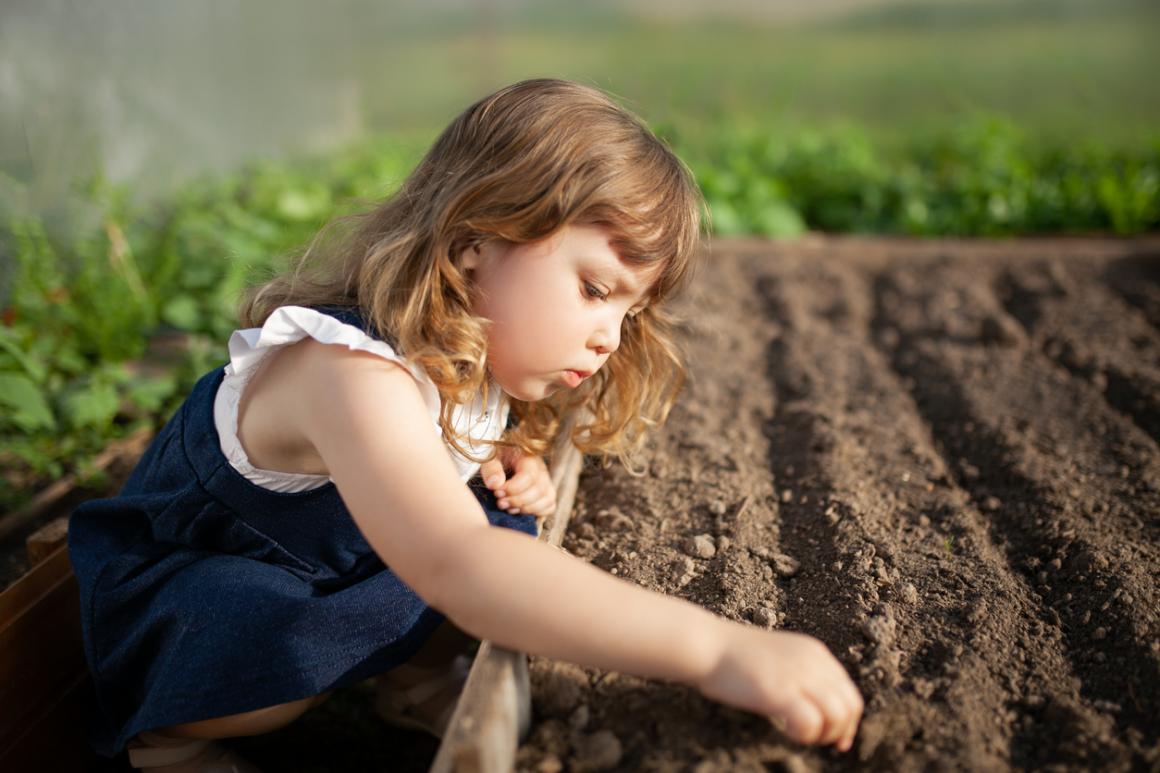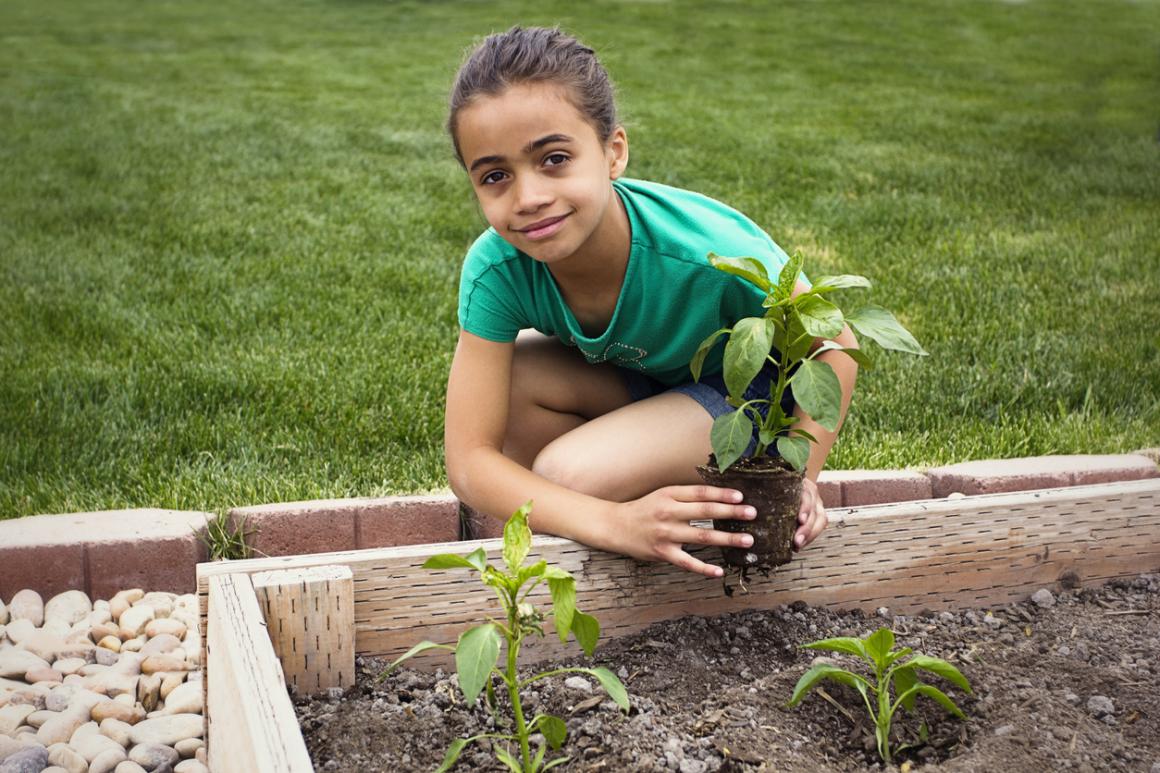
As the weather warms up, my family has been looking for more to do outside. Like many families, I've got my eye on growing a garden in our backyard. We’ve done this in the past, with varying degrees of success, but this year I have a few new goals.
I want to fully engage my kids, enticing them to enjoy healthier eating, and I'll throw in some biology and weather science while we’re at it. And it'd be great if the effort will actually supplement my regular grocery shopping this summer and fall.
To give families a garden starting point, we connected with experts at Tilth Alliance and Urban Feed and Garden in Seattle, and at The Mason Jar Farm in Enumclaw. And don't worry if you don't have a yard: A small patio or balcony — or even some containers indoors — can be fruitful.
Getting started
Start by heading to your local nursey to pick up starts and seeds. For soil, Melissa McGinn, program manager of natural yard care at Tilth Alliance, suggests purchasing a bag of compost to mix in with potting soil. Read the labels on starts or seeds (more on that below), and if you’re also picking out planting containers, check with a sales associate to make sure you get the right size.
“Purchase organic compost and potting soils with the OMRI label [Organic Material Review Institute] or the WSDA [Washington State Department of Agriculture] certified-organic seal, and mix 50 percent existing soil to 50 percent compost,” she says. “For containers, look for the words ‘potting soil’ or ‘container soil,’ because they are designed to drain well.”
What to plant to get kids excited
Before parents get overly ambitious and purchase a nursery’s entire seed inventory, McGinn suggests starting with what your kids already like. “Always start with things they would normally eat, like carrots and peas,” she says. “My daughter loves broccoli — it’s a favorite treat. For fruit, strawberries and blueberries are great starters. There are even smaller varieties of blueberry plants for containers.”
Sharon Siehl, youth and families program director at Tilth Alliance says, “There is research that shows that when kids plant and tend a fruit or vegetable, they are much more likely to try it. In that sense, anything is fair game."
“Let the kids choose two to three fruits or vegetables they already like, and then work together to find one to two fruits or vegetables that are new to them to give a try,” suggests Siehl.
Kids will likely be more engaged if they’re physically out in the garden or have a hand in the tending of the plants, notes Tilth Alliance community education specialist Carey Thornton. “My own kid is happy to graze on leaves and flowers and herbs in the garden. He’ll stand next to the snap peas and cherry tomatoes for five minutes happily putting them in his face. But he is not interested in eating salad once it’s dinnertime, even with those very same ingredients. Let them do it their way, whatever gets it in them.”

“In my experience gardening with kids, greens, carrots, radishes and beets are quick growers and are fun to harvest,” says Urban Feed and Garden's Kristi Robertson. “Harvest over the course of the growing season. You can have multiple root vegetables and they’re always exciting to dig up. Also, they can all be grown in containers, for those with limited space.”
Seeds or starts
“With root vegetables, I always start with seeds because they are difficult to transplant,” Robertson says. “Many things can still be started from seed — it's not too late! Seeds are cheaper, but more time-consuming.”
If you want to plant starts, now is the time to get them, says Jenni Sample, owner of The Mason Jar Farm, whose products are available at select farmers markets and by CSA.
“With most people who ‘fail’ at gardening, I notice it isn’t always the garden. It is the fact that we buy bad starts and in a few weeks they will be root-bound in the pots and turn yellow from the soil deprivation in the pot and/or lack of water,” she says. “Get them now while they are healthy and are ready to grow. The brassica family takes up to 90 days to be ready to harvest, but is worth the wait — broccoli, cauliflower, cabbages. Other fun favorites to start now from seeds are beets, carrots, onions, kale, peas and beans.”
Talk with staff at your local nursery for more advice on seeds and starts.
(Almost) instant gratification
Gardening can be an exercise in patience. “Red Russian kale is great and can be ready within two to three weeks,” says Sample.
Siehl also likes radishes. “Radishes are perfect for the spring, because they germinate in three days and can be harvested in 21 days. Their seeds are also very likely to germinate. Snap peas are also pretty reliable, but take about seven days to germinate and a few weeks to produce. But they are fun to watch climb and are a good project for making a trellis. Spinach, lettuce, cilantro and potatoes are other good choices.”
Windowsill herbs and microgreens
“For apartments without outdoor access, you can still do windowsill herb gardens or microgreens; they don't need that much sunlight,” says Robertson. “There are lots of fun things to do with herbs, like making herb salt for popcorn or using them in tea.”
Planting herbs at home can help save money over time as well, notes Siehl. “If you plant perennials such as rosemary, thyme, oregano, sage, chives and mint — plant mint only in pots because it spreads. Annuals such as cilantro, parsley, dill, epazote and basil are easy to do by seed and grow fine in pots.”
Microgreens also are not as intimidating as they sound and can be considered easy, beginner stuff, says Thornton. “You can do it indoors, the harvest comes quickly, and you get a nutrient-packed tasty crop that can be added to salads, sandwiches or even nibbled straight from the tray,” she says. “All you need is a shallow tray you can poke drainage holes in, a little bit of potting soil and seeds of plants you can eat the sprouts of. I like radishes, peas and sunflowers sprouts. You can even try sprouting popcorn seeds. Eat the corn shoots when they are very small and they taste a little sweet!”
Some garden grace
“There are many resources out there and a lot of information,” says McGinn. “I would like to let new gardeners know to not get overwhelmed with all the information. Start small, even if it is just one thing. Then gradually increase your skills and knowledge. Make a small plan for your garden with things you and your kids like to eat.”
For my family, coming back around to gardening this year started with the desire to stop going to the grocery store so frequently. Rather than throw away the tops of a bunch of green onions, I placed them in a cup of water on my kitchen windowsill. It took only a few days before the tops started to sprout new shoots, and within two weeks, they were nearly a foot long!
Since then, I’ve added leeks, celery and even a napa cabbage to my windowsill. Each morning, the entire family looks forward to checking out the progress of these plants, not so much because we’re eager to eat them, but because the change happens so quickly and that’s exciting to see.
Some of the things we placed in the ground this spring may never be eaten, but for our children, I’m hoping that seeing that things can still reliably grow in this uncertain world will inspire a sense of dependability and normalcy. And for parents, when everything else feels out of control, it’s nice to be able to cultivate a garden and literally witness the miracle of life.
More resources
If you have questions or run into trouble, consult your local nursery, including Tilth Alliance, Urban Feed and Garden and The Mason Jar Farm. The Tilth Alliance’s garden hotline (206-633-0224) is staffed Monday–Saturday, 9 a.m.–5 p.m., with experts to help you make the most of your gardening efforts. Questions can also be submitted through the Tilth website.
Editor's note: This article was first published in 2020 and has been updated for 2023.












